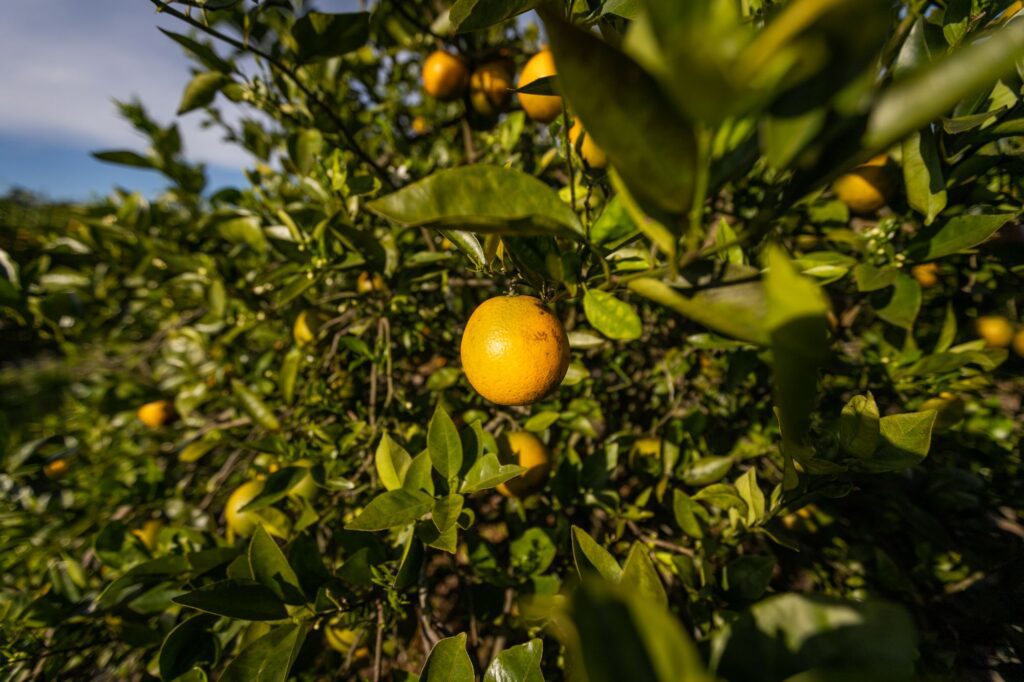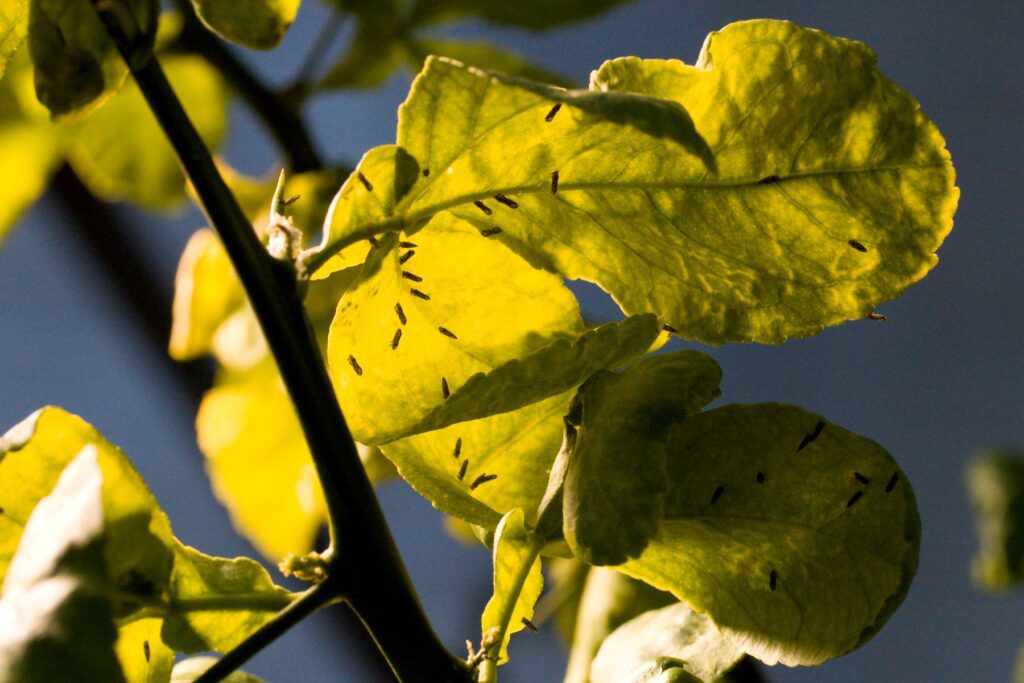by BRAD BUCK, UF/IFAS
Scientists at the University of Florida are testing a new type of citrus tree that can fight off the tiny insects responsible for citrus greening.
While the genetically edited tree has only been tested so far in the lab and the greenhouse, it is one of the most promising discoveries to date in a challenge that has plagued growers, researchers and consumers as Florida’s citrus industry has plummeted during the past two decades.
The approach involves inserting a gene into a citrus tree that produces a protein that can kill baby Asian citrus psyllids, the bugs that transmit the greening disease.
That gene normally occurs in a soil-borne bacterium called Bacillus thuringiensis (Bt).
This gene provides instructions for the new citrus tree on how to make this protein. Thus, when you put the gene into the tree, the plant produces the protein that kills psyllids.
While this approach can kill baby psyllids, UF/IFAS scientists are close to finding a solution to control the adult pests.

“We are trying to deploy a biotechnological solution that is sustainable, easy for growers to deploy and replaces the need for spraying insecticides,” says Lukasz Stelinski, an entomology professor at the UF/IFAS Citrus Research and Education Center. “That can’t be done completely with the current Bt trees and thus it might require some additional, albeit reduced, insecticide spraying for adults, for example.”
So far, scientists have developed the modified tree in the lab and the greenhouse.
Now, they must prove this method works in the field – and they’re still a few years away from perhaps reaching that conclusion, Stelinski says. They hope to begin testing the trees in about a year.
Since it was reported in Florida in 2005, greening, also known as Huanglongbing, or HLB, has damaged most of the citrus trees and the fruit they bear, around the state, leaving growers and scientists seeking answers to the disease.
UF receives funding from the U.S. Department of Agriculture for citrus greening research, which plays a key role in advancing and accelerating breakthroughs.
Through the new research, scientists have found that the tree is protected because all juvenile psyllids that feed on the tree are killed, Stelinski says.
“A citrus tree that produces its own potent defense against the Asian citrus psyllid by preventing this insect from reproducing would reduce or possibly eliminate vector populations,” he says. “In terms of stopping HLB, this approach could curtail the ability of an otherwise very effective vector from spreading the pathogen.”
Before UF/IFAS scientists started this research a few years ago, they knew that certain Bt proteins could kill other sap-sucking insects, but none were known to kill Asian citrus psyllids.
This protein kills psyllids. It binds to specific receptors on the gut wall, causing pores to form. This disrupts the insect cells on the gut wall, ultimately killing the insect.
In their experiments, scientists at CREC inserted a gene from Bt into citrus trees. The gene yields a protein in the phloem — the vascular part of a leaf where the psyllid feeds. Ultimately, that protein protects the tree from the psyllid and therefore, from citrus greening.
Bryony Bonning, an eminent scholar and entomology professor on the main UF campus in Gainesville, led the research to identify the bacterial proteins that kill psyllids.
In the most recently published study, UF/IFAS researchers found that the protein derived from Bt can kill the vast majority of the psyllids in their earliest stages.
Additionally, no new adults can emerge on the tree, so adults laying eggs on these plants will not perpetuate the population.
Adult psyllids remain an issue that scientists hope to solve in future research. For now, they’re working on controlling the baby psyllids on citrus trees.
“Given the widespread use of Bt proteins for protection of other crops against insect pests, we think we’re on the right track for control of the Asian citrus psyllid,” he says. “The next step is to prove this method works in the field, so that citrus growers everywhere will no longer have to contend with the insect that transmits this deadly disease. The next stage is to grow these trees in the ground into a more mature stage under natural field conditions.”

